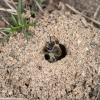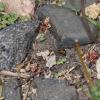Gardening for pollinators is a step that anyone with even the smallest of yards can take to help rebuild spaces in our urbanized landscapes to support bees, butterflies, and other wildlife. On an individual level, planting a patch of wildflowers can seem like a small drop in the bucket for pollinator conservation. But when many people come together around a common goal, small efforts can quickly add up to large-scale conservation.
Over the past several decades, Xerces has developed a large number of resources—plant lists, fact sheets, videos, webinars, books—as well as given scores of presentations to help gardeners across the country create high-quality habitat for native pollinators. In 2019, feeling the crunch of accelerating habitat loss and species declines, we realized that we could facilitate more rapid expansion of high-quality, climate-smart habitat for pollinators through a Habitat Kit Program, which provides carefully selected plants directly to partners for shovel-ready projects. This year, we piloted our first urban pollinator habitat kit program in Santa Fe, NM!
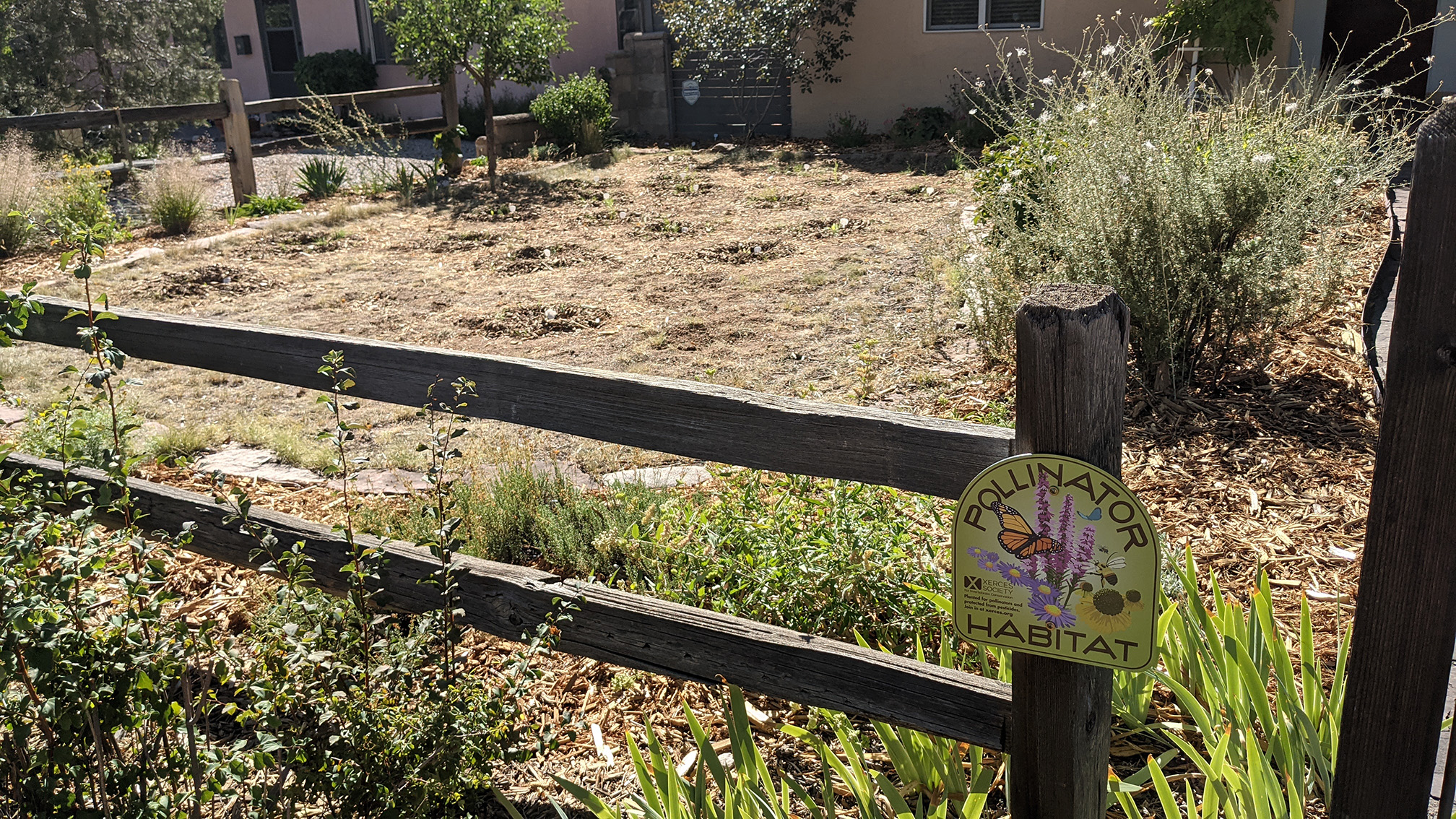
While the freshly planted native flowers may be hard to see, the pollinator habitat sign sure to catches the eye of a passerby! My heart skipped a beat when I spotted this recently planted habitat kit while on a bike ride through a Santa Fe neighborhood. (Photo: Xerces Society / Kaitlin Haase.)
Our Santa Fe habitat kits were designed to create pollinator habitat patches in yards and gardens of urban Santa Fe as part of a city-wide Pollinator Trail focused on creating connected habitat through neighborhoods that lack greenspaces. Xerces worked closely with the Santa Ana Native Plant Nursery to develop these kits, each of which contained thirty-two perennial wildflowers and one shrub, just the right amount of plants for a small yard or garden with an assortment of species providing spring to fall blooms. Two kit types were available, a low water kit and a low-to-medium water kit, both of which featured nine species selected for their pollinator attractiveness, ease of cultivation, and resilience to climate change in the Santa Fe area.
Three hundred fifty kits were distributed to people for use in yards and gardens throughout Santa Fe—a total of 11,550 plants! Over 225 residents and 26 public spaces received habitat kits, including schools, parks, nature preserves, museums, neighborhood associations, and community gardens. Most of the organizations receiving kits will use the new plantings in their educational programming to inform the public about gardening for wildlife, pollinator conservation, and the importance of drought-tolerant, native plants to promote climate resilience in the desert Southwest.
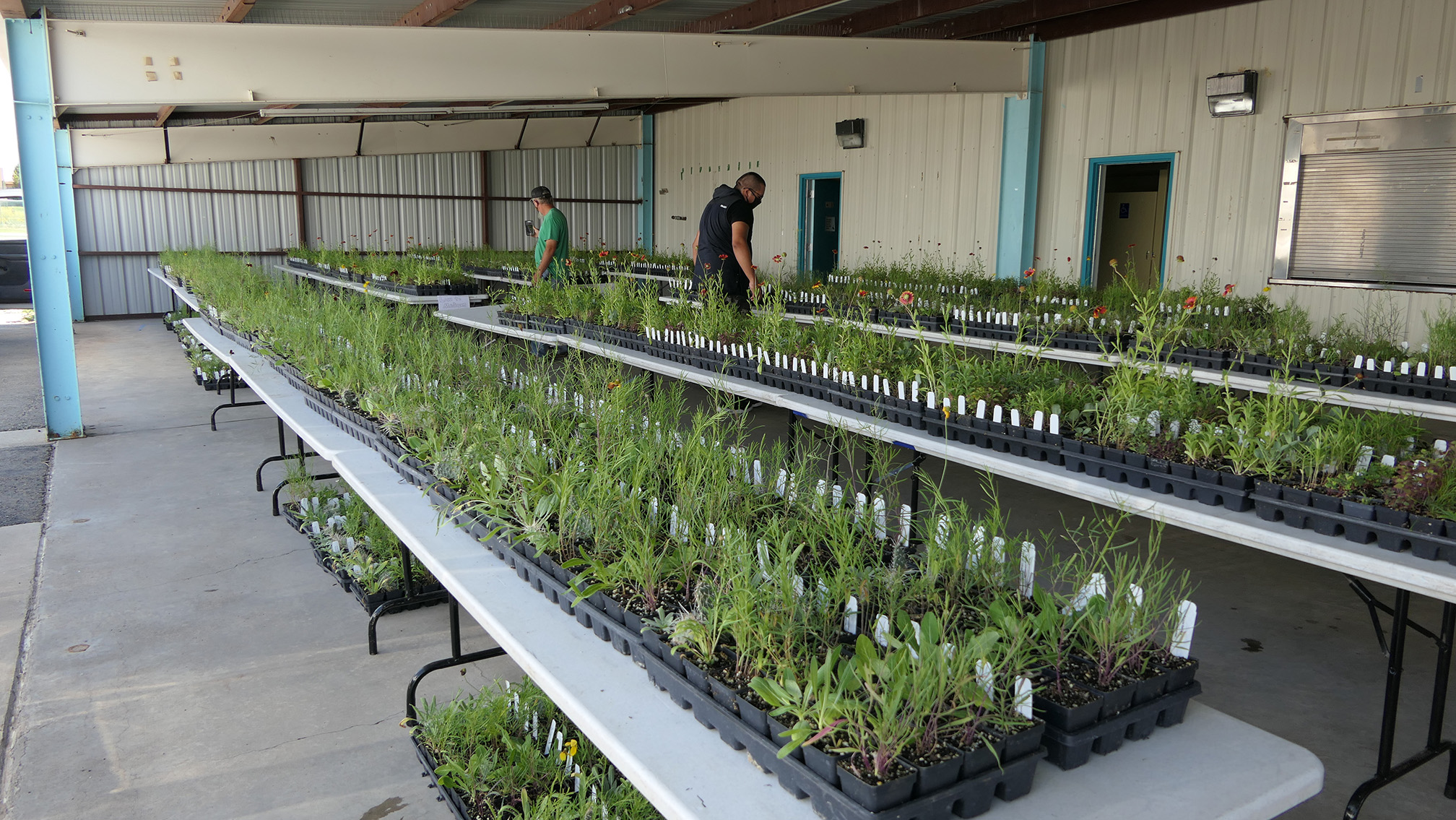
After months of planning and preparation, hundreds of pollinator-friendly habitat kits were finally ready for pickup in mid-September. Each kit contained nine different species of native flowering plants that together will provide continuous bloom from spring to fall and support a diversity of native Southwest pollinators. (Photo: Xerces Society / Kaitlin Haase.)
There are many things for gardeners to consider—which species are appropriate to plant for native pollinators in their area, where to source those species, were the plants grown from locally adapted seed and with pollinator-friendly pest-management practices—and it can be tricky to figure it all out. The Santa Fe habitat kits were crafted with all of these considerations in mind to make it easy for gardeners to conserve pollinators at home.
The growing practices of Santa Ana Native Plant Nursery, owned and operated by the Pueblo of Santa Ana, ensured the plants would be safe for pollinators and appropriate for the climate and ecosystems of Santa Fe. The plants were grown without the use of pesticides and most species were grown from locally collected seeds. As a bonus, the kits included some native plants that occur commonly in the Santa Fe area, but are not readily found in nurseries, including horsetail milkweed (Asclepias subverticillata), Macdougal verbena (Verbena macdougali), and threadleaf groundsel (Senecio flaccidus).
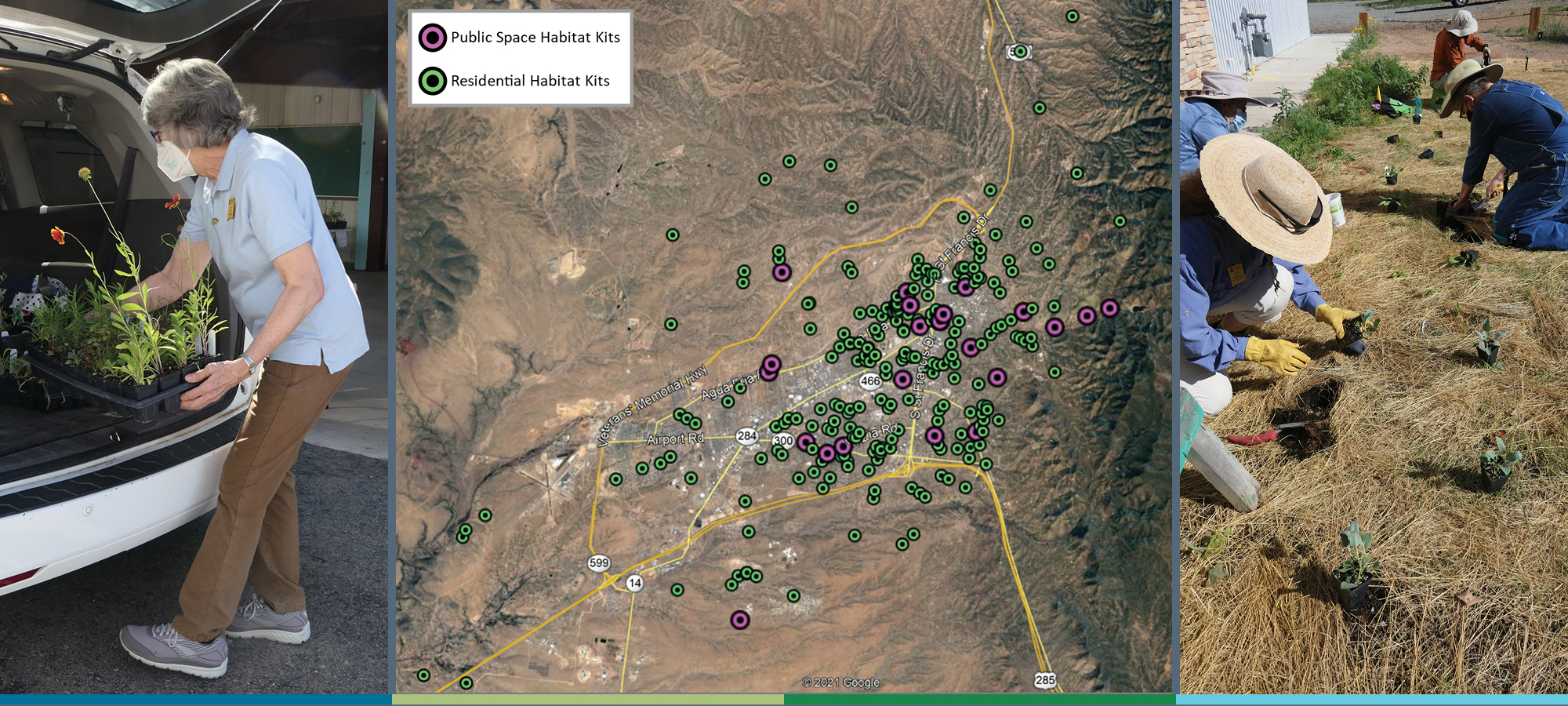
This composite image shows (from left to right) a volunteer loading a habitat kits into a car’s trunk during the distribution event; a map of the locations where the kits will be planted; and Santa Fe Master Gardener volunteers planting a low-water habitat kit in the new pollinator demonstration garden at the Santa Fe County Extension office. Each kit will be one of hundreds of small connections in a network of pollinator habitat patches throughout the city of Santa Fe. (Photos: Xerces Society / Kaitlin Haase.)
Xerces provided the kits at no charge to ensure that there were no financial barriers to people participating in this program. In return, the recipients made a commitment to care for and monitor each kit. The kits were distributed with a pollinator habitat sign and guidance for the planting and maintenance of their kits. The guidance (in the form of a document and webinar) was developed with help from the Santa Fe Botanical Garden and Santa Ana Native Plant Nursery staff. The pollinator habitat sign shows that these new plantings are part of a larger projects, sparking conversations with neighbors and visitors, and generating community-wide interest in the efforts to conserve habitat for pollinators.
The enthusiasm of participants and seeing how happy they were when picking up the kits brings me so much joy, and I’m excited to continue supporting others in building pollinator habitat throughout the city. This program is expected to continue, and we anticipate offering habitat kits to folks in Santa Fe again in 2022!

The Santa Fe Pollinator Habitat Kit project would not have been possible without the involvement of many local partners. A pesticide-free greenhouse at Santa Ana Native Plant Nursery is filled with plants for the kits. (Photo: Xerces Society / Kaitlin Haase.)
Further Reading
Learn the four things to do to Bring Back the Pollinators
Find information for your home region in the Pollinator Conservation Resource Center
Read about Xerces’ Pollinator Habitat Kit Programs (California, northeast region, and Santa Fe)
The detailed planting guidance provided with the habitat kits.


